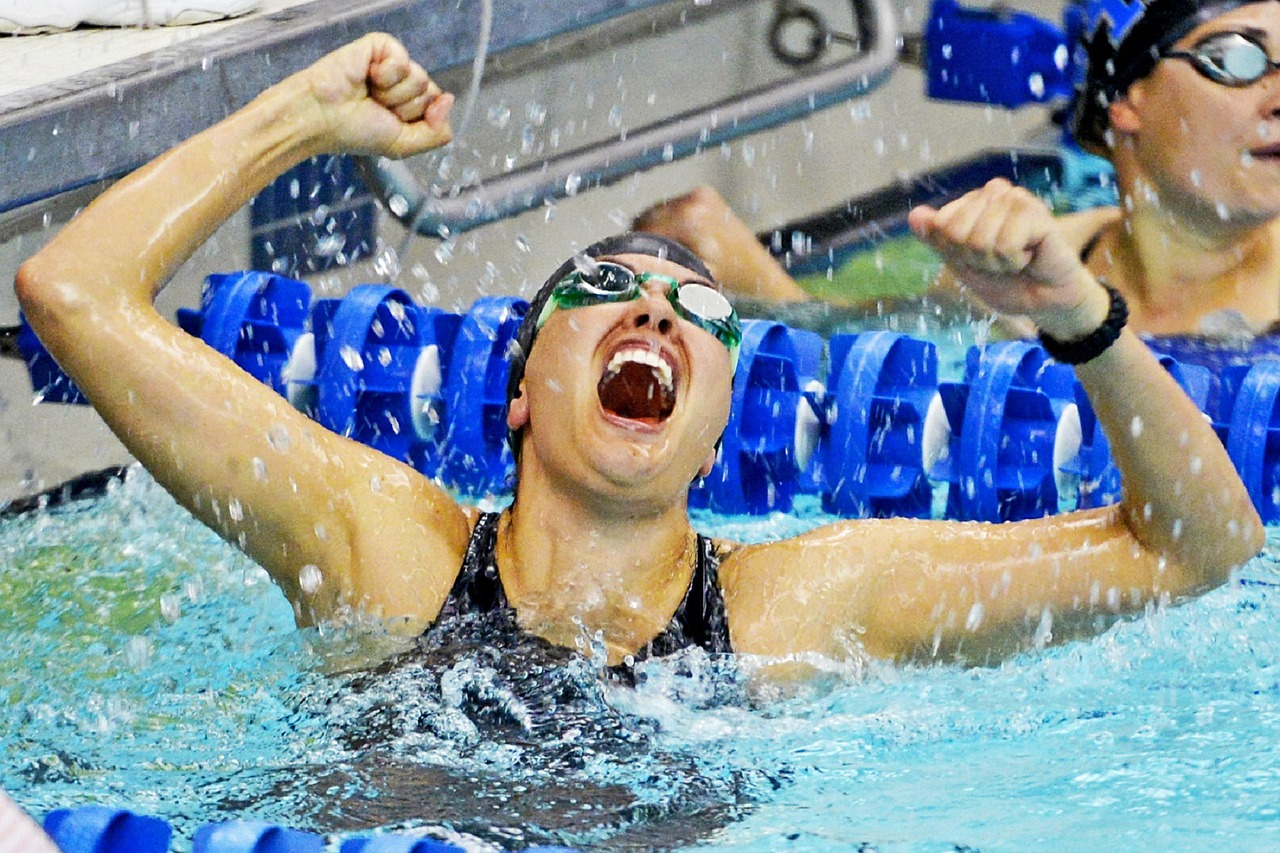Coaches see it in youth swimming all the time – the swimmer who hates kicking. Some swimmers rely too much on their upper body to pull them through the water. The problem is that swimming is a full body sport. You can’t ignore one of your largest muscle groups and hope to get personal bests. A swimmer’s kick can provide as much as 80% of forward propulsion. Here’s the science behind why you should incorporate kicking drills with fins to swim faster.

Proper foot position is key to the flutter kick
A powerful flutter kick propels you forward faster in freestyle and backstroke, but to execute it properly, you need to increase plantar flexion. In layman’s terms, you need to point your toes. The muscles and tendons in your calf, shin, heel, and foot move together to move your foot into plantar flexion. Pointing your toes contracts calf muscles and brings the heel toward the leg while shortening the Achilles tendon. The change in alignment gives the top of your foot a larger surface area and reduces drag.
Make your foot work like a fin
Everyone kicks faster with fins. Some of the speed can be attributed to the fins forcing your feet into proper position; it’s impossible to use fins without pointing your toes. Adding in the larger surface area and increased flexibility of the fins amplifies all of the benefits of a proper pointed-toe kick, generating more propulsion.
Pointing your toes requires strong, flexible ankles
Stretching calf muscles and foot and ankle tendons is the most effective way to increase flexibility in your point. Flexibility is measured by the degree of angle; a normal degree of plantar flexion is about 50 o, but swimmers should pursue maximum flexibility for peak efficiency. Tendons take more effort to stretch than muscles, so begin by stretching your muscles.
Too much flexibility can cause destabilization on land, which might explain why swimmers tend to be less than graceful out of the water. To minimize the risk of injury while walking to the pool, swimmers must increase ankle strength simultaneously.
There are many effective stretches and exercises that build muscle and increase ankle flexibility, including kick drills wearing fins. The key muscles to target with strength training exercises are the ones that run down the front of your lower leg and attach to tendons just above the ankle bone. Training with fins is particularly powerful because you preserve the head position and body alignment, unlike dryland exercises.
Kicking better is as simple as pointing your toes
Coaches and lesson instructors always tell you to point your toes when you kick. To make your kick more powerful, strengthen your ankles and stretch your feet by training in fins. The increased ability to point your toes will help you reduce drag and make your kick more efficient during competition. Ideally, swimmers can increase plantar flexion enough to reduce drag without becoming a danger on land. The goal is to create a straight line, keeping the top of the foot in line with the lower leg while kicking.
Grab your goggles, jump in, and drop time with a more powerful kick at your next meet. reduces drag.
